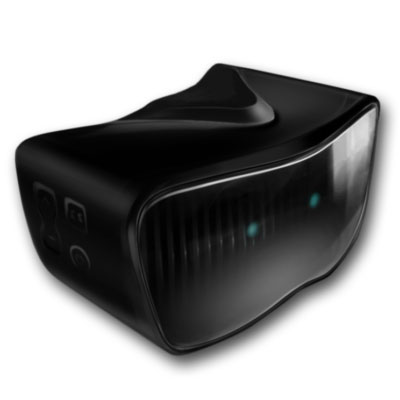Nvidia's Jetson TX2 Powers GameFace Labs' Standalone VR Headset
GameFace Labs today introduced the developer kit for the company’s upcoming Head Mounted Console (HMC) VR device. The new headset is a standalone VR device, but it’s unlike any other headset we’ve seen on the market. Most standalone VR headsets feature processing hardware sourced from Qualcomm, which provide ample performance for mobile content, but GameFace Labs opted for a more powerful configuration. The GameFace Labs HMC features Nvidia’s Jetson TX2 module with a Pascal GPU, which enables it also to support SteamVR content.
The GameFace Labs HMC runs Android 7.0 Nougat and supports Android VR software that you can find on the Google app store. GameFace Labs said that the Head Mounted Console would be the first cross-platform VR device. The HMC operates as a standalone unit for Android and native VR content, but you can also tether it to your PC to access your Steam VR library.
GameFace Labs worked with Triad Semiconductors to ensure that the HMC would be compatible with Valve’s SteamVR (Lighthouse) Tracking system to enable sub-millimeter room-scale tracking. The GameFace Labs developer kits include Lighthouse base stations, and a pair of 6-DoF tracked controllers.
GameFace Labs is currently accepting pre-order applications, but the company said that the developer kits are in limited supply and it would be selective about who will get a kit. Hopeful developers must pass an applications process to qualify for the purchase. Qualified developers will receive the opportunity to purchase a GameFace Labs HMC Developer Kit for $599. They would also receive a retail HMC when they hit the market later this year.
GameFace Labs said that it would deliver the first dev kits over the next few weeks.
| Header Cell - Column 0 | GAMEFACE LABS HEAD MOUNTED CONSOLE – HMC |
|---|---|
| Compute Platform | Nvidia Jetson TX2 Module - |
| GPU | Nvidia Pascal, 256 Cuda Cores |
| CPU | HMP Dual Denver 2/2 MB L2 + Quad ARM® A57/2 MB L2 |
| Memory | 8GB L128-Bit DDR4 Memory |
| Storage | 32GB eMMC 5.1 Flash Storage |
| Connectivity | 802.11ac Wi-Fi, Bluetooth, 10/100/1000BASE-T Ethernet |
| Display | 2560x1440 WQHD Low-Persistence OLED, Sub 20ms latency |
| Power | 19V AC Adaptor or Battery Pack |
| Tracking Technology | Valve SteamVR (Lighthouse) 6-DoF tracking |
| Compatibility | Standalone: Android 7.0, Native GameFace Labs content Tethered: SteamVR content via OpenVR |
Get Tom's Hardware's best news and in-depth reviews, straight to your inbox.
Kevin Carbotte is a contributing writer for Tom's Hardware who primarily covers VR and AR hardware. He has been writing for us for more than four years.
-
DSpider Looking at the specs, 256 Cuda Cores seems a bit anaemic...Reply
Wasn't that supposed to be 2560 instead? -
darkchazz Reply20997012 said:Looking at the specs, 256 Cuda Cores seems a bit anaemic...
Wasn't that supposed to be 2560 instead?
It's using a SoC much like the nvidia Tegra lineup, not a GTX 1080. -
bit_user Reply
It's using a <= 10 Watt SoC that's made for tablets and Chromebooks. Basically, a turbo-charged version of what's in the Nintendo Switch. It doesn't compare well with desktop (or larger laptop) GPUs.20997012 said:Looking at the specs, 256 Cuda Cores seems a bit anaemic...
Wasn't that supposed to be 2560 instead?
https://en.wikipedia.org/wiki/Tegra#Tegra_X2
Even the GTX 1030 would be faster.
https://en.wikipedia.org/wiki/List_of_Nvidia_graphics_processing_units#GeForce_10_series -
cryoburner Reply
This is something I have felt standalone headsets should do. It shouldn't add much to the manufacturing cost of such devices, and it greatly expands what can be done with them. Otherwise, you're limited to the mobile VR ecosystem, and whatever built-in hardware the device has at the time of its launch.20996894 said:The HMC operates as a standalone unit for Android and native VR content, but you can also tether it to your PC to access your Steam VR library.
